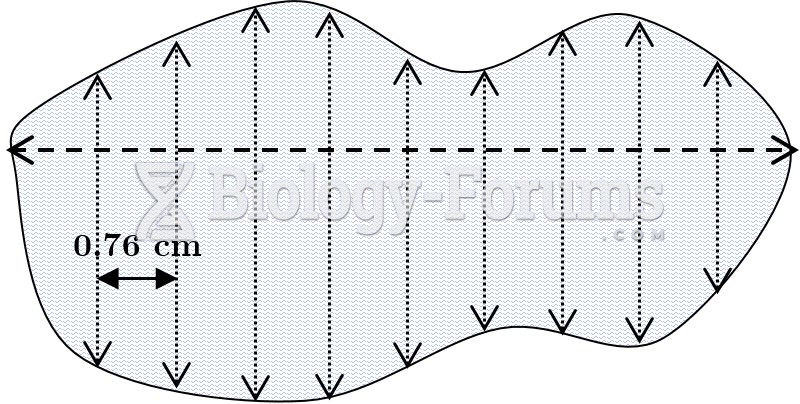|
|
|
The human body's pharmacokinetics are quite varied. Our hair holds onto drugs longer than our urine, blood, or saliva. For example, alcohol can be detected in the hair for up to 90 days after it was consumed. The same is true for marijuana, cocaine, ecstasy, heroin, methamphetamine, and nicotine.
IgA antibodies protect body surfaces exposed to outside foreign substances. IgG antibodies are found in all body fluids. IgM antibodies are the first type of antibody made in response to an infection. IgE antibody levels are often high in people with allergies. IgD antibodies are found in tissues lining the abdomen and chest.
Asthma attacks and symptoms usually get started by specific triggers (such as viruses, allergies, gases, and air particles). You should talk to your doctor about these triggers and find ways to avoid or get rid of them.
About 3.2 billion people, nearly half the world population, are at risk for malaria. In 2015, there are about 214 million malaria cases and an estimated 438,000 malaria deaths.
Once thought to have neurofibromatosis, Joseph Merrick (also known as "the elephant man") is now, in retrospect, thought by clinical experts to have had Proteus syndrome. This endocrine disease causes continued and abnormal growth of the bones, muscles, skin, and so on and can become completely debilitating with severe deformities occurring anywhere on the body.
 Use of fluorescent molecules by Lowenstein and colleagues to determine the size of gap-junction chan
Use of fluorescent molecules by Lowenstein and colleagues to determine the size of gap-junction chan
 Transplantation of an extra stomach and length of intestine in a rat. Koopmans (1981) implanted an ...
Transplantation of an extra stomach and length of intestine in a rat. Koopmans (1981) implanted an ...
 Two wells are filled with different antigens and when they diffuse, they form lines that cross which ...
Two wells are filled with different antigens and when they diffuse, they form lines that cross which ...




